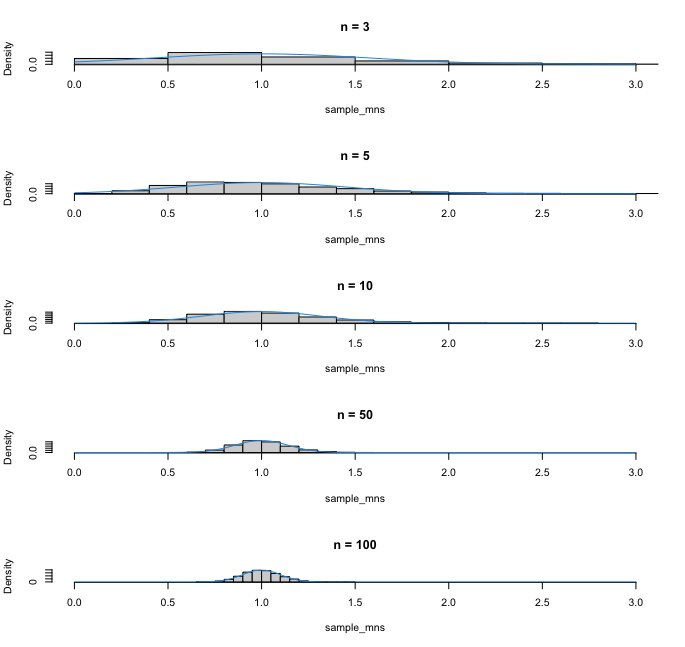You could (and the fact that you ask means you understand the idea of a sampling distribution better than most) ... but you wouldn't want to.
TL;DR - it wouldn't be the best use of your data.
Let's consider two dueling options:
- Take ten samples of size 10, take the average of each sample, and use the mean & sd of your sample averages to describe your sampling distribution.
- Take one sample of size 100, and appeal to the CLT.
Under option (1), what you'd be describing is the sampling distribution for a sample of size 10. (Plus, you'd have to assume that your ten sample averages give an accurate estimate of the standard error, a subject for another day). Regardless, you'd have to assume normality.
Under option (2), you have the sampling distribution for a sample of size 100. Not only will this be much more nearly Normal, it will be much narrower (about 32% as wide), which will allow you to construct a much narrower interval, and will be much more useful for inference.
"But wait... what if I just took a LOT of samples! I wouldn't have to assume normality anymore!"
That's true! If you took enough samples, you could just use the quantile values of your sample averages to construct a confidence interval ... but it would still be based on the distribution of a sample of size 10 - much wider than it could be.
Here's a simulation in R. I'll draw samples from an exponential distribution, which is about as non-Normal as you can get.
hist(rexp(10000, rate=1)) # Ick!

Here's what sampling distributions look like for sample sizes of 3, 5, 10, 50, and 100. The histogram gives the distribution of 10,000 random samples for each trial sample size, and the blue curve is the normal approximation of the sampling distribution.
ntrial <- c(3, 5, 10, 50, 100)
par(mfrow=c(5,1))
for(n in ntrial) {
sample_mns <- replicate(10000, mean(rexp(n, rate=1)))
hist(sample_mns, main=paste("n =",n), xlim=c(0,3), freq=F)
curve(dnorm(x, mean=1, sd=1/sqrt(n)),add=T,col=4)
}

So, as sample size increases, the magic of the CLT allows us to work with a much nicer sampling distribution, both in terms of shape and width.


